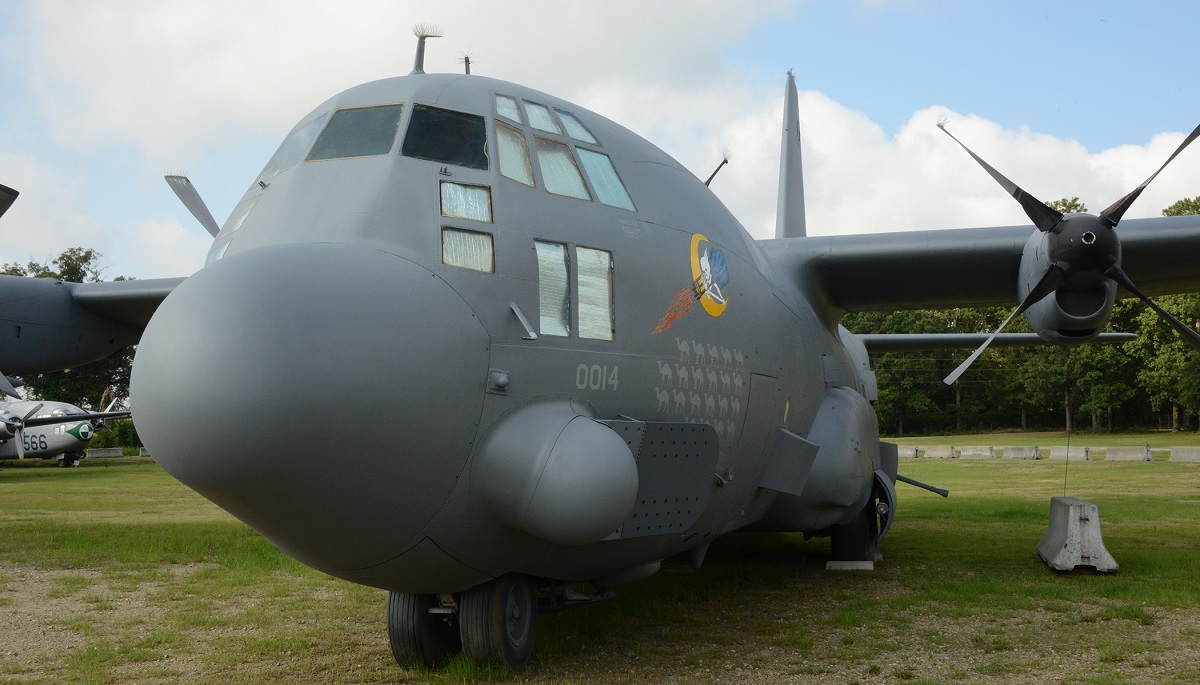Due to the magnitude of the destruction wrought that night, the stretch of road that Haddad and his team had fired on became known as the “Highway of Death.”
The AC-130 gunship (in its different versions) is a heavily armed aircraft with side-firing weapons and advanced sensor, navigation, and fire control systems designed to offer surgical firepower or area saturation during lengthy loiter periods, at night, and in bad weather. Multispectral television sensors, high-definition infrared sensors, and radar make up the sensor suite. These sensors allow the gunship to detect friendly ground forces and targets visually or electronically at any time and in any location.
Close air support (CAS), air interdiction (AI), and armed reconnaissance are the main roles of the AC-130. Troops in contact (TIC), convoy escort, and point air defense are all CAS operations. AI operations include strike coordination, reconnaissance, and armed overwatch mission sets that are carried out against preplanned targets or targets of opportunity.
AC-130s of the United States Air Force (USAF) primarily provided CAS and force protection (air base defense) for ground forces during Operation Desert Storm (ODS).
On Feb. 26, 1991, Capt. Richard S. “Beef” Haddad and 1st Lt. Randal L. Bright, both members of the 711th Special Operations Squadron (SOS) at Duke Field, Florida, were assigned to a mission over a road connecting Kuwait City and Baghdad, as reported by Paul H. Larson, Headquarters Air Force Reserve Command History Office in the article The Ghost Over the Highway: Reservists renew the bond with Desert Storm AC-130A gunship. Iraqi armies invaded Kuwait in August of the previous year, setting off a chain of events that led the United States to dispatch military personnel to Saudi Arabia as part of Operation Desert Shield/Storm. These actions included the 711th SOS. Iraqi military trucks exiting Kuwait and returning to Iraq clogged the road.
Maj. Michael N. Wilson and Maj. Clay McCutchan, and two other reservists, piloted the lead AC-130 as the 711th SOS raced to block Iraqi soldiers from Kuwait to Iraq. Wilson and McCutchan assessed that they lacked sufficient fuel to complete the task. As a result, they radioed Haddad, pleading with him to “get up here” and “hurry up.”
Haddad observed that his aircraft’s autopilot system was not operating while en route. He and his co-pilot, Bright, faced a larger challenge than they had anticipated since they relied on the autopilot’s altitude-hold function to keep the plane at a constant height while banked and firing the gunship’s weapons.
Haddad had to turn the plane manually while firing the guns to compensate. Bright knelt in his seat, facing an equally difficult challenge of simultaneously operating the aircraft’s throttles and yoke to maintain a constant height. Haddad, Bright, and the rest of the reservists on board the plane stayed in position to complete the mission, firing their guns with little resistance — a situation that altered swiftly.
Haddad and his companions learned that their efforts had not gone unnoticed as they began to depart the “killbox.” Master Sgt. Don Dew, the illuminator operator, eagerly exclaimed “missile launch” over the radio as they went south. Haddad increased power and dived the plane in response, while the aircraft’s navigator, Capt. Jose Davidson, fired flares to counter the missile. Hearing the noise and seeing the light produced by the flare, Haddad and Bright, unaware of the navigator’s actions, assumed their aircraft had been struck.
“My hands were gripping the throttles, thinking we were going down,” Haddad said.

Haddad and Bright recognized they weren’t in any danger after watching more flashes.
Haddad and his crew didn’t realize the gravity of the task they were on that night until later. However, because of the magnitude of the destruction that wreaked that night, the section of road they had fired on became known as the “Highway of Death.”
While the precise number of people killed or injured is uncertain, the attack is thought to have damaged 1,400 to 2,000 vehicles. At least 20 hostile trucks and four armored personnel carriers were destroyed by Haddad, Bright, and the crew. For their actions that night, they were awarded the Air Medal.
Richard S. “Beef” Haddad, now Major General, and Randal L. Bright, Colonel, boarded the AC-130A Spectre gunship – No. 55-0014 – at the Museum of Aviation at Robins Air Force Base, Georgia, on June 12, 2014, more than 20 years after ODS.
The plane that transported them over the “Highway of Death” that night was the identical one.
Haddad, who is now vice commander of Air Force Reserve Command (AFRC), and Bright, commander of the 927th Air Refueling Wing at MacDill AFB in Florida, recalled that memorable night of early 1991.
“It was an exciting time for me and the other members of my crew,” Haddad said in the Aug. 2014 edition of Citizen Airman. “That experience helped me go to war in the future as we went to Operation Iraqi Freedom (OIF) and Operation Enduring Freedom (OEF). It helped in terms of realizing the risks and what it was like to be a crew member going into that kind of environment.”
Bright, like Haddad, claimed that the event had a lasting impact on him and his career because it “was always something I could hang my hat on. As a youngster in the Air Force, I had seen combat.”

Source: U.S. Air Force; Photo by Senior Airman Julianne Showalter and Master Sgt. Chance Babin / U.S. Air Force

